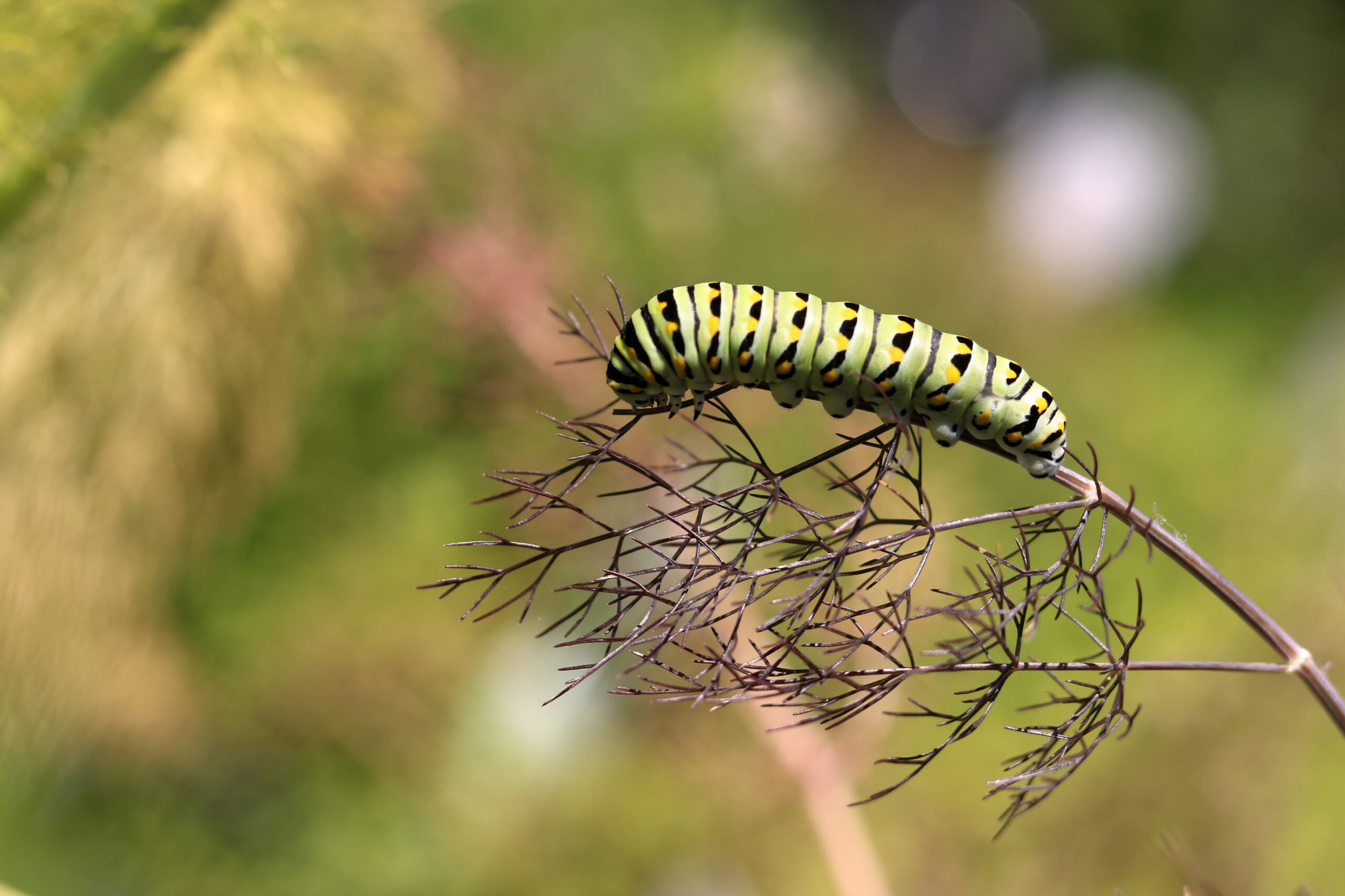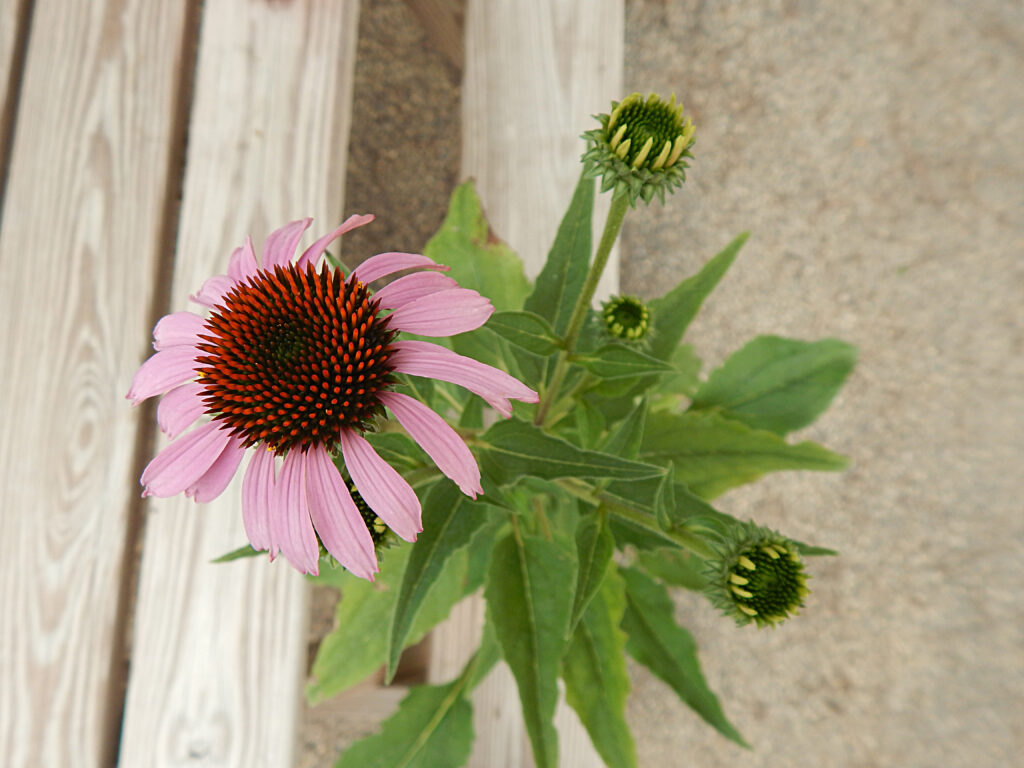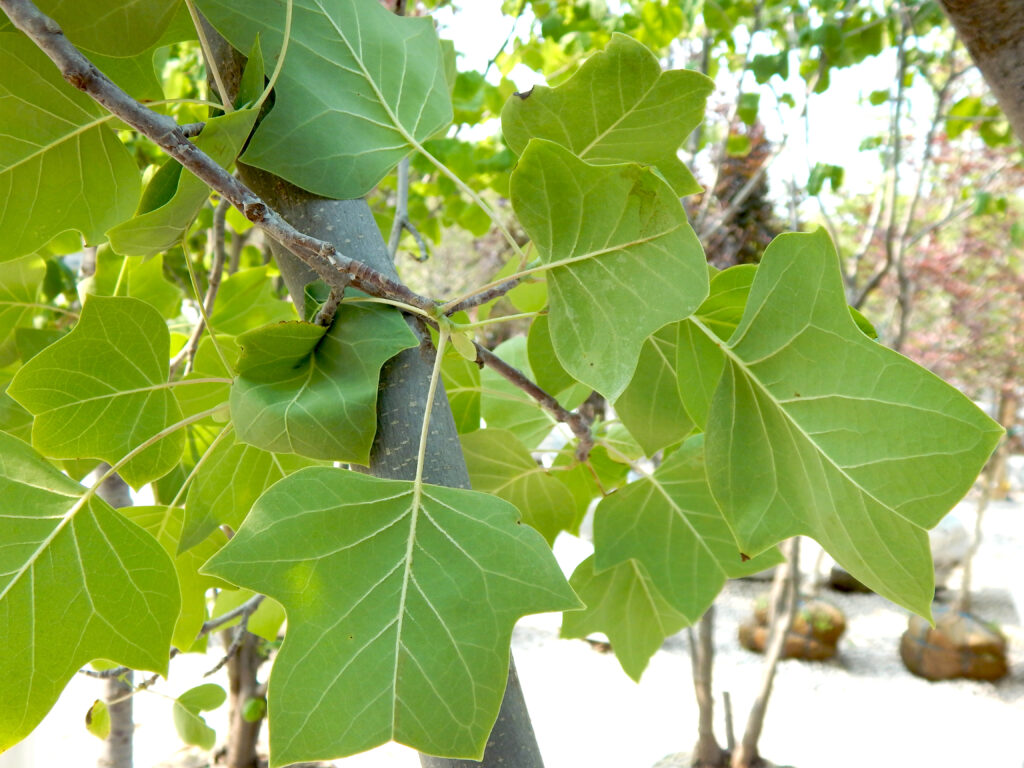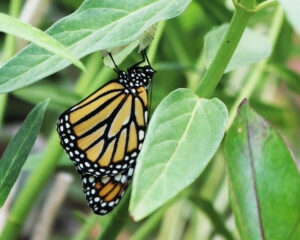

While it can be concerning to notice leaves eaten by caterpillars, there are many reasons to value caterpillars in your gardens. They are both the precursors to butterflies and a leading source of nutrition for baby birds. Today, I would like to focus on the young – how do we create environments conducive to them reaching adulthood? At the center of it all are caterpillars.
Why caterpillars? In his book, Nature’s Best Hope, Douglas Tallamy cites many reasons they matter. Caterpillars are soft and easy for baby birds to digest. Baby birds need an extraordinary amount of food and an average caterpillar is equal in weight to 200 aphids! Last but not least, caterpillars are high in proteins and fats, and especially valuable, carotenoids.
It stands to reason that to have butterflies, and to feed baby birds, we first must feed the caterpillars. From this perspective, seeing leaves chewed by caterpillars is a good thing. In fact, it is essential.
Did you know? Today, many home landscapes are not conducive to the needs of caterpillars. Many, if not most, caterpillars only eat plants they co-evolved with, that is, native plants. The Pollinator Conservation Association defines a native plant as “a plant that has evolved over a long period of time in a certain place.” When it comes to attracting birds and butterflies, we must consider what it takes to sustain their species’ populations. Of first concern is feeding and sustaining caterpillars by choosing plants that they can eat.
Piala’s Nursery and Garden Shop currently stocks the straight species of many native plants. Here are some options you may like for trees, shrubs, perennials, and vines!




The amount of value provided varies by species – some plants support a greater number of insect species than others do. It is possible to select host plants intentionally to support as many types of caterpillars as possible. This is due to the work of Kimberley Shropshire, which studied host plants down to the county level in the United States. All of this is to say, there are specialized relationships between insects and host plants (those which they subsist on). By way of example, a monarch can nearly exclusively develop on the milkweed genus Asclepias.
To enjoy birds and butterflies, it is important to consider their full life-cycles in your garden and landscaping decisions. Caterpillars should not be commonly regarded as garden pests, but rather as valuable members of the ecosystem and food web. Generally speaking, seeing chewing from caterpillars should be a cause for celebration, not alarm. (There are exceptions, such as when the population is too large and consuming too much of a plant). By sustaining caterpillars, your landscape is more likely to be home to birds and butterflies. And don’t forget to supply nutrition for all life stages – provide plant matter for caterpillars, nectar sources for butterflies, and seed or berry-producing plants for mature birds.
Two of our favorite books on the topic:
Nature’s Best Hope: A New Approach to Conservation that Starts in Your Yard – Douglas W. Tallamy
Bringing Nature Home: How You Can Sustain Wildlife with Native Plants – Douglas W. Tallamy
Retail Hours
Sun: CLOSED
Mon: CLOSED
Tue: 9:00am - 6:00pm
Wed: 9:00am - 6:00pm
Thu: 9:00am - 6:00pm
Fri: 9:00am - 6:00pm
Sat: 9:00am - 4:00pm